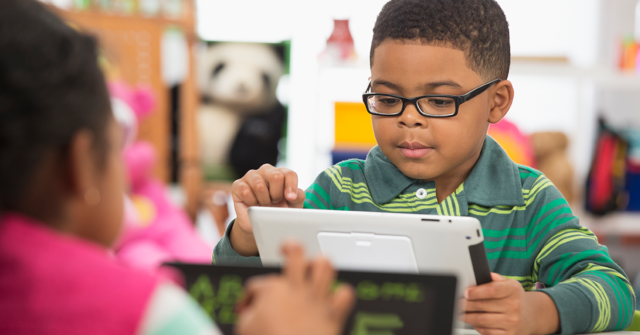
Fostering student engagement is a crucial factor in promoting successful learning outcomes. When students are actively engaged in their literacy learning, they develop a genuine interest in reading. Engaging and captivating reading materials, discussions, and activities create a positive association with books and literature. This, in turn, nurtures a love for reading, leading students to explore diverse genres and texts beyond their academic requirements.
During whole-group literacy, it’s important that students are interested in the books, discussions, and teachings for the most impactful, engaging literacy instruction. Engaged students not only participate more in their learning, but they are overall better achievers and are more successful in their learning.
Here are 5 Tips for Increasing Engagement During Whole-Group Reading:
1. Select engaging, grade-appropriate books
When selecting texts, think about interest of the students in your classroom. Some things to keep in mind when selecting texts are:
- Genres that vary
- Books that inspire learning opportunities
- Texts with rhythm and rhyme, especially for young students
- Text sets that have a similar theme or big idea for students to compare and contrast
- Age-appropriateness
- Texts with emotion, humor, that are moving, or have thought-provoking ideas
2. Utilize Inquiry-Based Learning
Inquiry-based learning allows students to think on and come to discovery on their own, allowing them to feel much more empowered in their learning. Being able to discuss ideas and noticings with their peers as they, together, uncover more information about the book, gives students a sense of agency as they collectively result in the right answer. When students gain information through inquiry, it makes learning that much more meaningful, memorable, and impactful.
3. Lean on Instructional Teaching Routines
Instructional routines not only aid the teacher in feeling prepared for what to expect in the day’s lesson, but students will feel confident in their learning as they recognize familiar teaching routines. Instructional routines allow students to know what to expect and get students excited for learning. Having multiple teaching routines to choose from will help to keep lessons fun and interesting for all, while still ensuring students feel equipped to learn.
Instructional routines can feature games, pocket chart activities, chants and songs, clapping or tapping, word/letter/picture sorts, sound/letter/spelling boxes, as well as many other activities.
4. Foster Student Discussion and Collaborative Learning
During the introduction, the reading, and after reading, promote collaboration and peer-to-peer interaction through purposeful prompts. Encourage students to engage in meaningful discussions with turn-and-talks, share their thoughts, and exchange ideas. By providing opportunities for students to learn from one another, you create a vibrant learning community that thrives on shared experiences and diverse perspectives.
5. Use Enlarged Texts for a More Engaging, Impactful Experience
Take learning further by captivating students’ interest with large texts in a shared reading experience. With enlarged texts, students can see the images and text more clearly, allowing for a closer, more impactful experience where all students can learn and participate. Enlarged texts are more engaging for students as they can have a more immersive learning experience.
Engagement is vital to the learning experience: an engaged learner is not only more interested in their learning, but actively wants to learn. Along with these five tips for increasing engagement, you may also wish to try a free Shared Reading lesson during your next whole-group literacy block.


